
Sustainable Design; How To Design A Workspace With Sustainability In Mind
When using phrases like “workplace of the future” most people imagine a high-tech, utopian model of business efficiency. However recent years have seen climate change and the importance of eco-friendly practices placed front and centre of their priorities. Not surprisingly, when we discuss the workplace of the future, sustainable design tools, products and services are quickly identified as innovative solutions to help organize and implement a new way of working.
Much of the world started working from home during 2020 which led to a huge reduction in travel and triggered reports from around the world of significant environmental gain. Many companies are concerned with continuing the good work that’s been done and are committed to finding a way of more eco-friendly working. Sustainable workplace design is the key to success in this area, applying innovative methods to save energy, cut waste and boost the quality of life of all those involved.
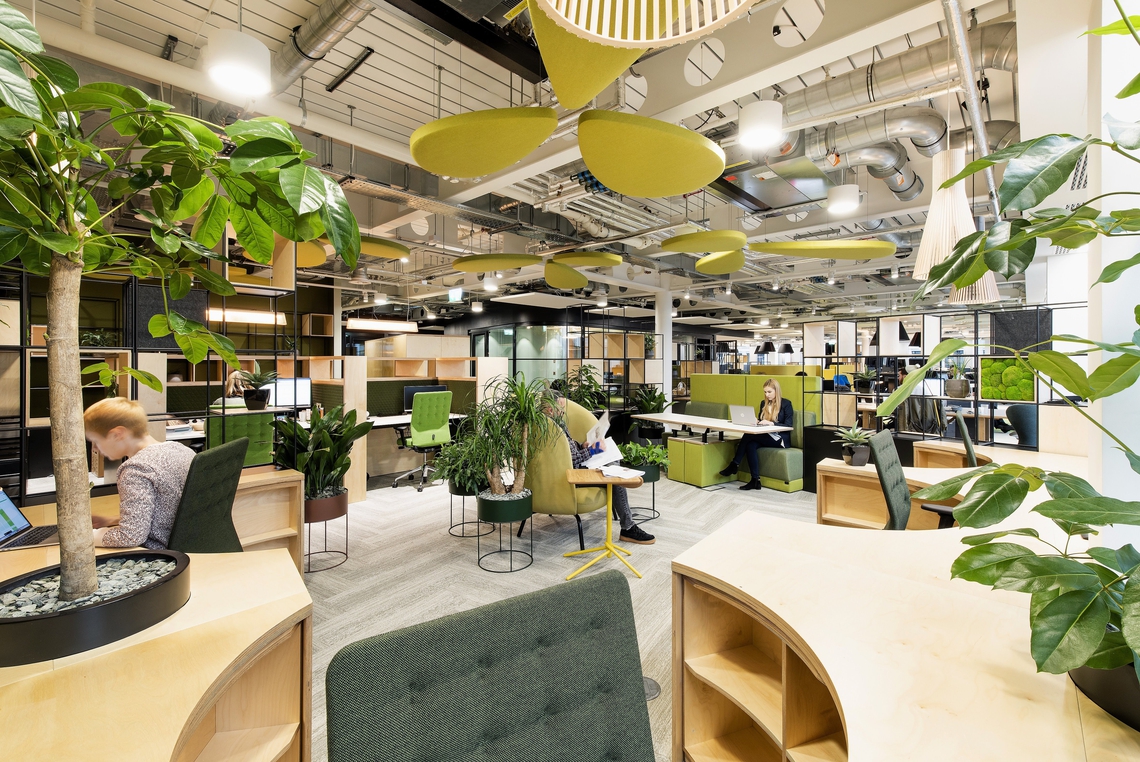
The power of space to influence our energy, interaction, health, and drive is tremendous. As a global company, our impact on the environment is significant. We seek to consistently support and strengthen the global community by creating a unique, unforgettable workspace experience and inspiring wellbeing.
Reduce, reuse and recycle are not new concepts. In fact, they are guiding principles in sustainability and still apply to workplaces of the future to meet new, more challenging goals. By consistently integrating these core concepts into each step of the design process, from concept to occupancy, we can create more resilient, sustainable workplaces.
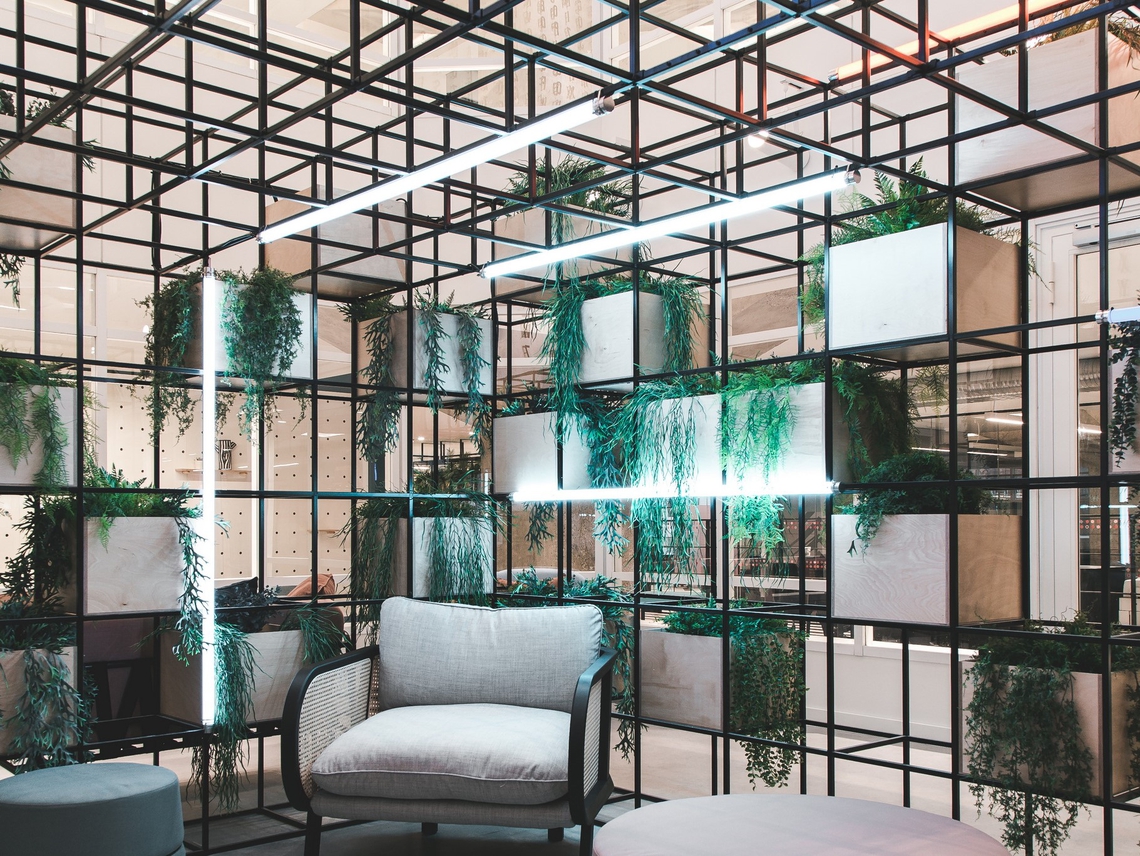
How to ensure sustainable design in the workplace.
1. Materials
When selecting materials and interior finishes, it is important to consider the energy required for production and transportation. Durability and longevity of materials and products are also critical factors. Opting for timeless palettes of materials and color can help eliminate the need for frequent replacement when trends go out of style. With so many workspaces needing to adapt and change, using modular and flexible furniture means the workspace can evolve without the need to refit all the furnishings.
Wood is a sustainable and renewable material which many workplaces use because of its universally-appealing characteristics of texture and warmth. Materials produced with minimal emissions can further reduce the overall carbon footprint of an office. The sustainable workplace incorporates eco-friendly materials, with recycled furniture, non-toxic paints and recyclable equipment at the top of the list. At Spacestor, our products are at least 85% recyclable so if there’s ever a need to discard our furniture, environmental impact is minimal.
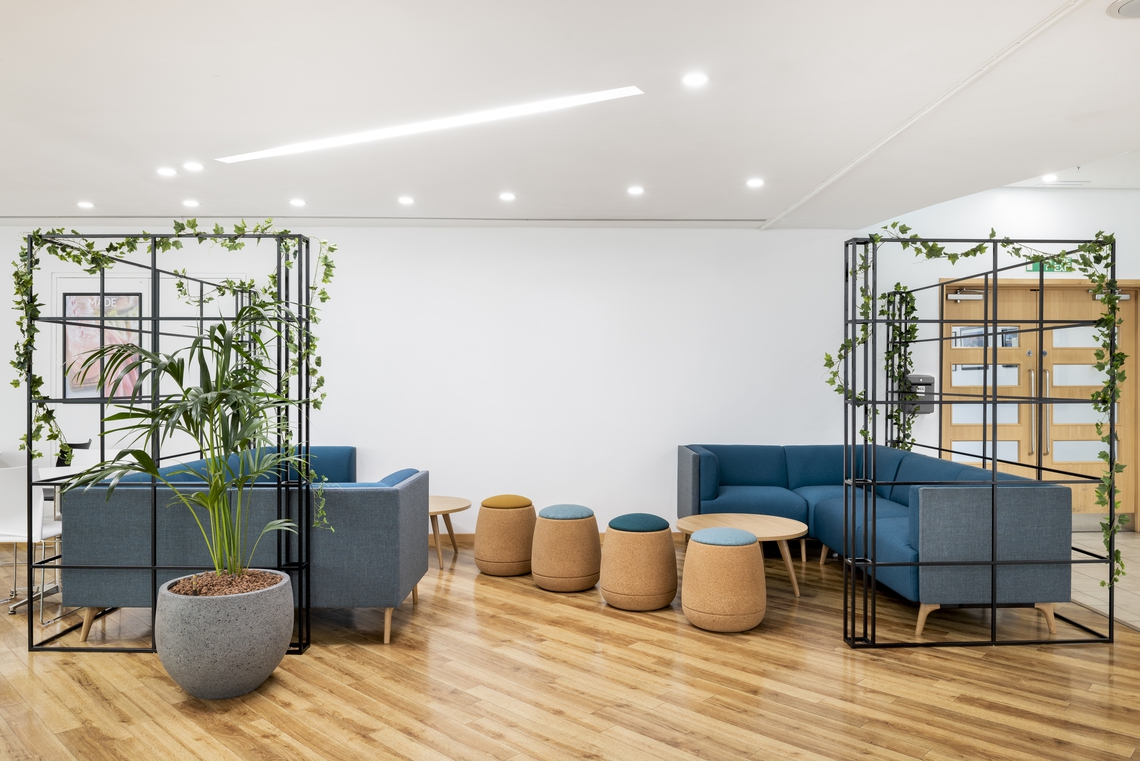
2. Environmental
Holistically applying reduce, reuse and recycle strategies can be a real game-changer in designing efficient, low-carbon spaces. Identifying opportunities early on and committing to them throughout the design process effectively mitigates carbon emissions. The challenge ahead is to simultaneously make smart decisions from a climate perspective while still creating functional and aesthetically-pleasing workplaces.
The quality and quantity of air in the spaces we inhabit have a direct impact on our health, well-being, and cognitive function. Studies have shown that “green” workspaces with higher outdoor ventilation rates can improve cognition and task performance. Designing a workspace that enhances the biophilia and using select indoor plants to help filter the air can reap many health and wellbeing advantages.
3. Social and Cultural
For sustainable design to be effective, the workforce needs to believe in the eco-friendly practices it promotes. This begins with the organizational culture of the company, with many promoting recycling programs, car-sharing and cycle-to-work schemes as a way to engage employees with the cause.
It’s also important to note that sustainable design isn’t limited to preserving natural resources; it also enhances the wellbeing of employees. Therefore, features that maximize comfort and employee happiness, such as ergonomic seating and noise-control measures, are key considerations.
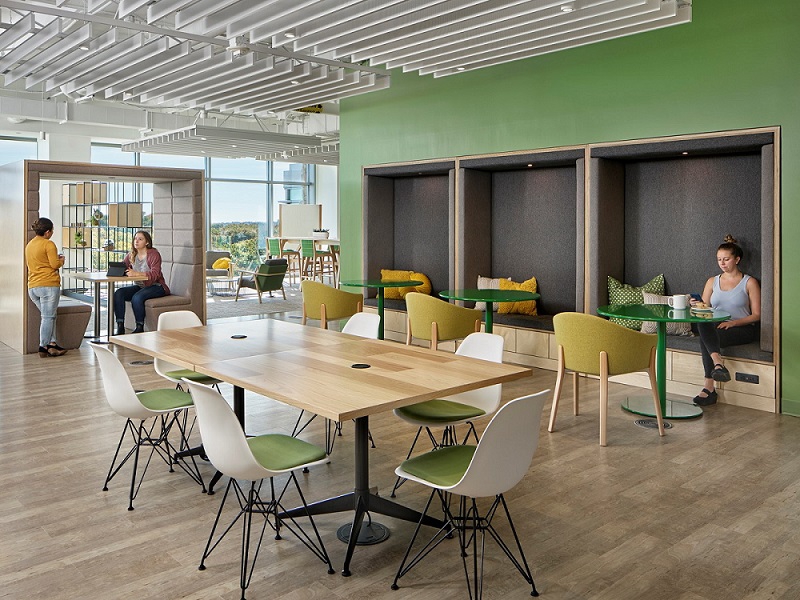
4. Economical
These “workplaces of the future” are being designed and built today at costs comparable to typical office space, with increasingly positive results to an organization’s bottom line.
The ability to adapt space to evolve with changes in the office means that reconfiguring the neighborhoods and zones is often required. Highly-flexible solutions, such as the new Palisades II range, allows teams to build unique spaces, with open offices benefitting from natural light, space, and collaboration. This allows for a simple, attractive division of space without building walls. With organizations changing so fast, leading techs need agile spaces that can be repurposed quickly and cheaply.
Other innovative and customizable solutions that reinvent the modern workspace are also increasingly popular, choosing a modular meeting booth is a great choice for sustainable solutions as they can be reconfigured easily and are an inexpensive alternative to building permanent meeting rooms. These modular booths are also relocatable and therefore adaptable to the ever-changing workspace.
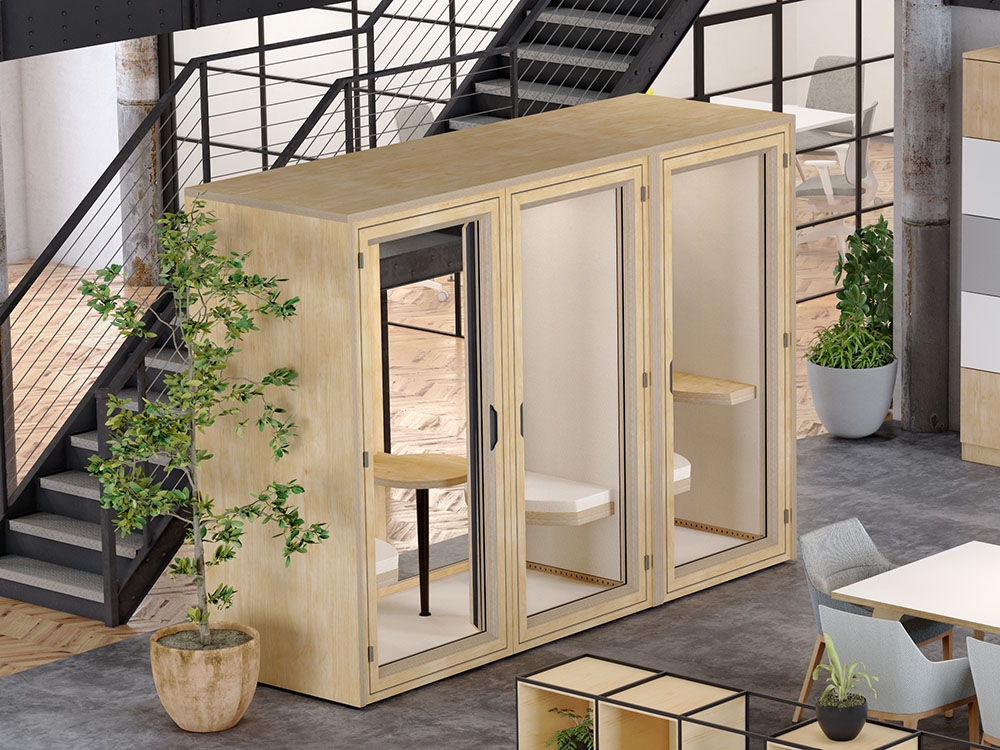
At Spacestor, we take our environmental responsibilities seriously; progressively studying and addressing factors such as waste management, the provenance of our timber, and reducing the overall carbon footprint of our business. Minimizing our environmental impact is a key consideration at every step of the way. We pride ourselves on our innovative designs which are inherently space-saving and therefore efficient by nature. See here for more about how we incorporate sustainable design.
We were approached by one of the World’s leading global tech companies to produce the best video conference booth, with a particular focus on sustainability, user experience, and inclusivity. After a two-year development journey, we designed a solution from the ground up with every detail created to optimize the sustained video call experience for all people. The working space was tested and honed to provide an optimum user experience. Careful consideration was given to Employee protection and sustainability, designed with a materials palette that is compliant with stringent standards and LBC Red List Compliant, no added formaldehyde, and patented PVC-free acoustic seals ensuring the health, safety, and comfort of all users as well as the least possible environmental impact.
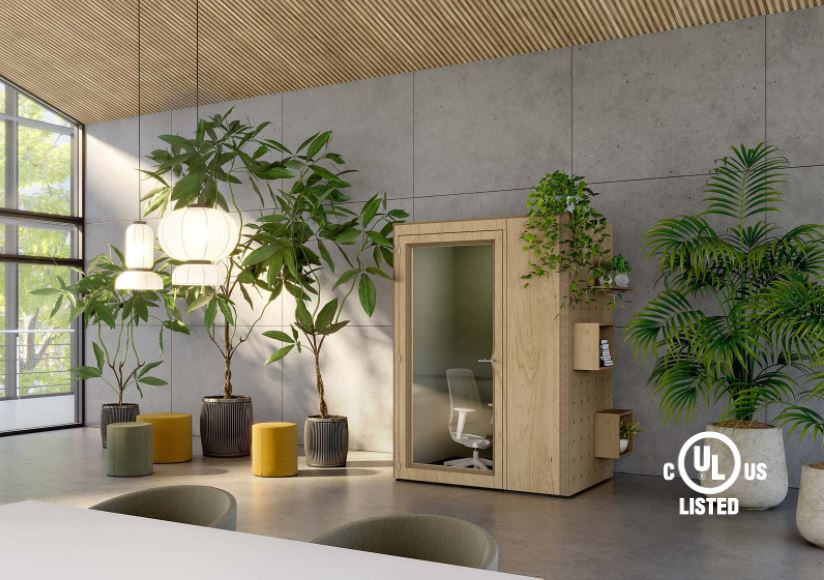
At a time where public concern over climate change is at an all-time high, sustainable office design has never been so important. Done effectively, it promises a whole host of benefits to the environment and the workforce, enhancing wellbeing and providing a collective sense of purpose. Organizations that take their ecological footprint seriously are also more likely to be viewed favourably by customers and clients. The secret to building a truly sustainable workplace is to choose well-made furniture that will last, uses healthy materials in its composition and is flexible enough to adapt to any eventuality.
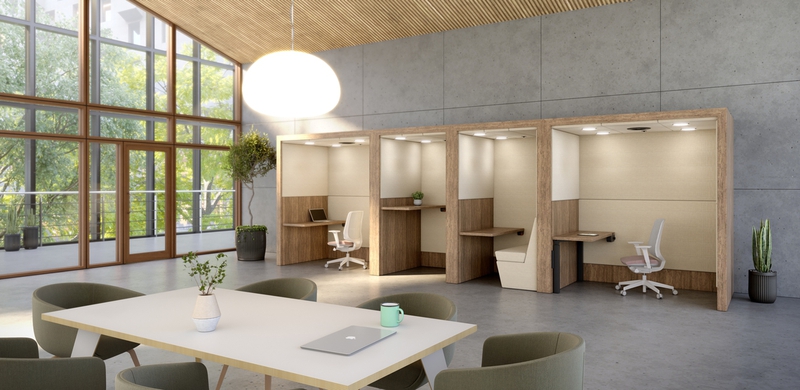

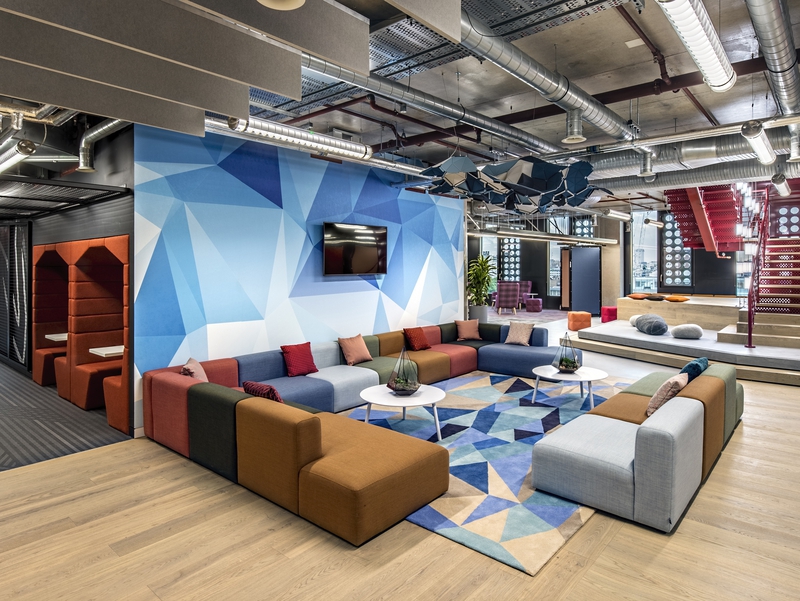
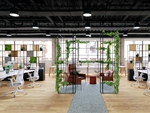

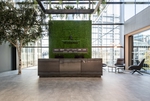

Situated in the heart of the vibrant Spitalfields Market, Adecco's London location is a statement of a their investment…
PROFESSIONAL SERVICES

Leading design firm Jacobs have recently completed another location for one of their long-time clients in the financial…
FINANCIAL SERVICES

An extra 100,000 square foot for the Curzon Building of BCU, providing enviable facilities for this hub of student exce…
EDUCATION